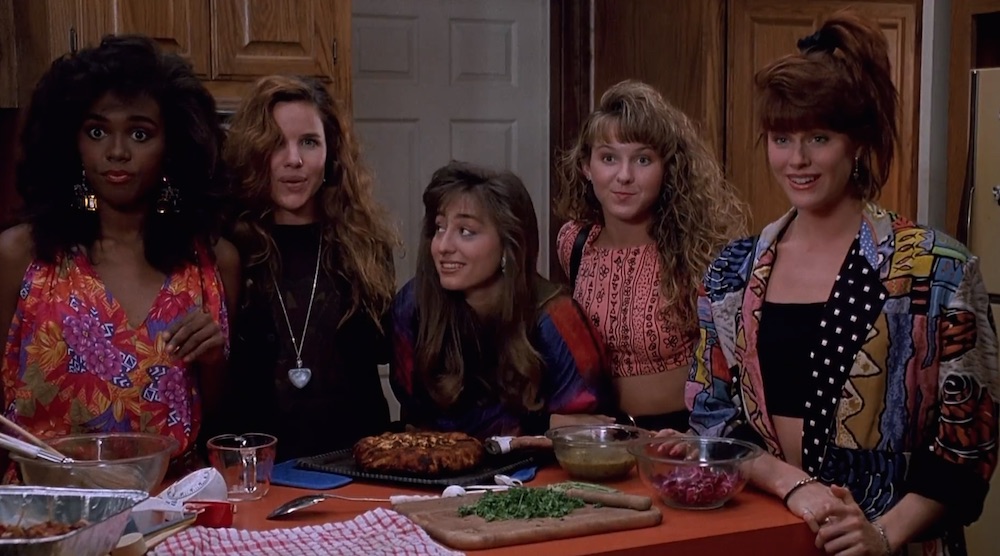|Becky Welander|

Don’t Tell Mom the Babysitter’s Dead screens from Friday, April 1 to Sunday, April 3. For tickets or more information, scroll to the bottom of this page or visit trylon.org.
I’ve been interested in fashion for as long as I can remember.
I grew up in a very small town in Southeastern Minnesota in the 1970s and 80s, where I spent much of my childhood dreaming of escaping to bigger, fashionable locales such as New York, Paris, and London. As a young child, I aspired to develop a look that combined Little House on the Prairie and LA in the 1970s, particularly the LA seen on Three’s Company and Charlie’s Angels. I still remember the thrill of getting my first Gunne Sax dress. When I started kindergarten, my mom made all of my clothes, which were mostly dresses. On the last day of kindergarten, I informed my mother that I would no longer be wearing dresses to school. From now on, I would wear jeans or cords. I don’t know if I really disliked wearing dresses or if I just wanted to fit in, which in rural Minnesota meant wearing mostly jeans and sweatshirts. During high school, I suppressed my desire to dress like my 1980s fashion idols––Madonna, Molly Ringwald, and Malory Keaton from Family Ties––and continued dressing down to fit in as much as possible.
But when Beverly Hills 90210 premiered in 1990 during my senior year of high school, it opened up a whole new world of LA style to me. From that point on, I wanted to be Kelly Taylor. I think I’ve always idealized the fashion of the 1990s because it represents the freedom I felt in college, when I finally escaped what I saw as the oppression of small-town life, where I was finally able to express who I really was through fashion, theatre, art, etc.
Don’t Tell Mom the Babysitter’s Dead was released in the summer of 1991; it was the summer following my high school graduation, just like Sue Ellen, Christina Applegate’s character in the film. Like Sue Ellen, I also had dreams of working in fashion. In 1991, I worked at the Express store in the Apache Mall in Rochester, and I was moving to Minneapolis in the fall to study fashion design at the University of Minnesota.
Nineties fashion has been creeping back into our culture in the past few years. Normcore is somewhat inspired by 1990s Jerry Seinfeld. Slip dresses and high-waisted jeans are back. Vogue released a podcast about the nineties in 2020 and The Museum at FIT has an exhibit on nineties fashion running through April 17 of this year.
I had been trying to track down a copy of Don’t Tell Mom the Babysitter’s Dead for a few years, because I couldn’t find it streaming anywhere. Then, my husband gave me a copy on DVD for my birthday last year.
Here are my five favorite looks from Don’t Tell Mom the Babysitter’s Dead in order of appearance:
Boho look – When we’re first introduced to Christina Applegate’s character, she’s wearing a loose, black and red floral dress. This Stevie Nicks-inspired look feels both vintage and ahead of its time like the boho looks popularized by Nicole Richie in the 2000s.

Black and white Chanel-esque suit – When Sue Ellen starts pounding the pavement in search of a job in fashion, this look helps her land one. It’s by far the best of her pretending-to-look-like-an-adult outfits.

White, puffy shirt – Sue Ellen wears this when she celebrates her new status as a career woman with her siblings at Chuck E. Cheese. The puffy shirt (made notorious by Seinfeld) was a favorite of mine while working at the Express.

Black bodysuit with high-waisted, rayon pants – Sue Ellen wears this on her second date with Brian, her former co-worker at Clown Dog. I still love this look. Black bodysuits were a staple in my wardrobe in college. My fashion idol, Kelly Taylor, also rocked this look.

Bellhop look – This is just one of many designs adapted by Sue Ellen from GAW stock for the fashion show she puts together to save the company from bankruptcy. I actually wore a short, striped bellhop style jacket to my high school graduation.

I have always felt that Don’t tell Mom the Babysitter’s Dead was an underrated movie, and I still love it. I think possibly the title and promotion of the movie suggested a movie with a lot more hijinks. And while it didn’t quite achieve the pop cultural status Clueless did a few years later, it features a much greater range of 1990s styles.
If you love fashion movies, I suggest you give this overlooked classic a watch.
Edited by Michelle Baroody
